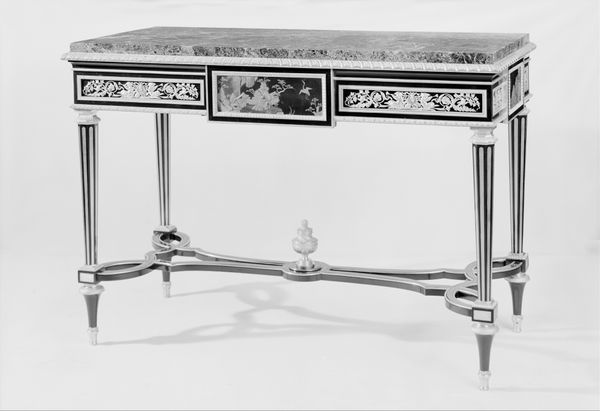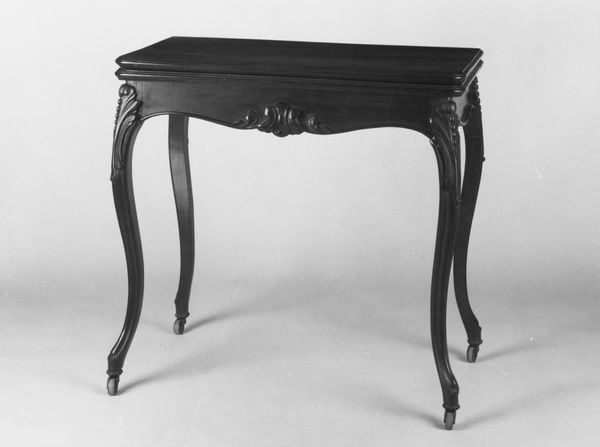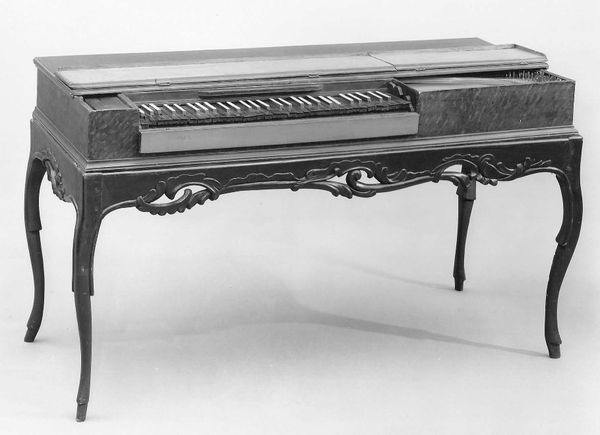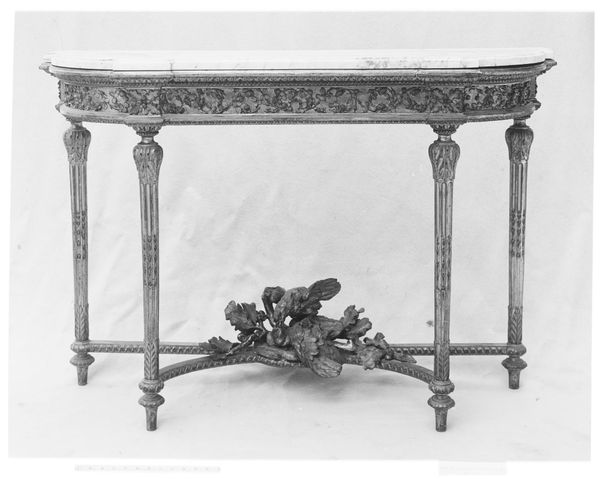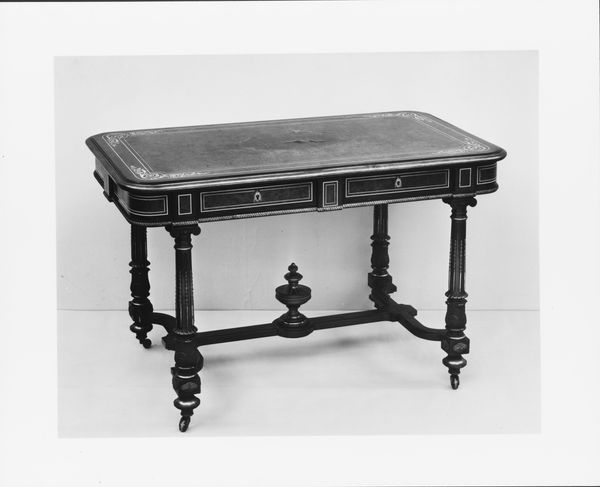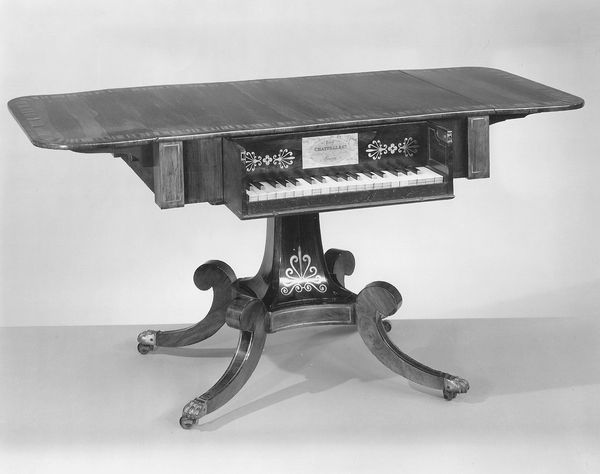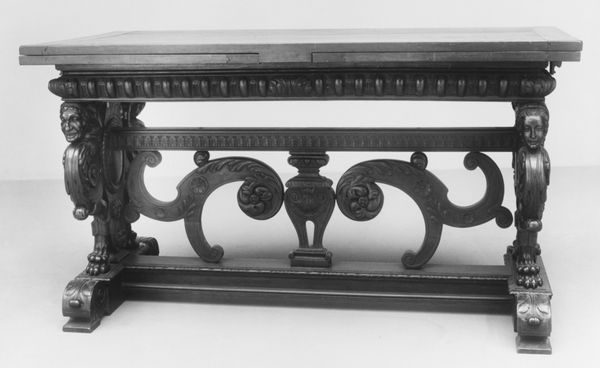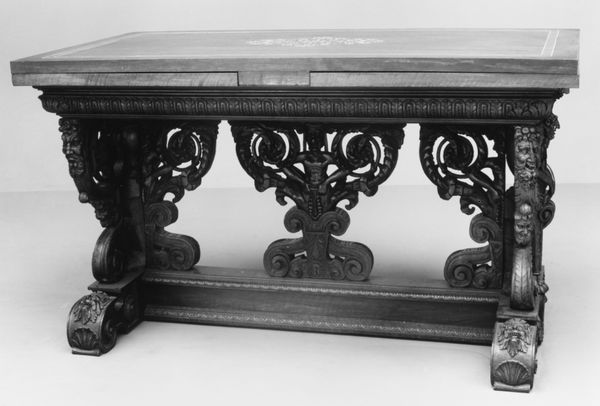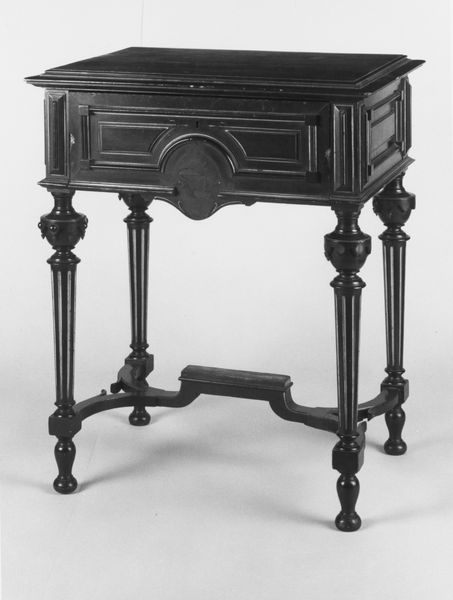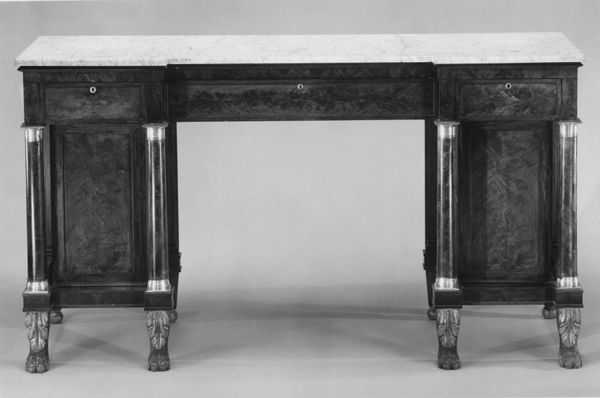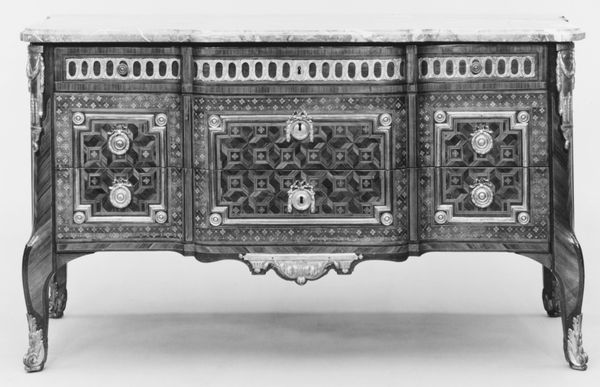
carving, wood
#
carving
#
sculpture
#
wood
#
musical-instrument
Dimensions: L.: long edge/short edge: ca. 142 / ca. 97 cm (ca. 56 / ca. 38-1/4 in.) W. perpendicular to long edge: 75 cm (29-5/8 in.) D.: 19.5 cm (7-3/4 in.) Diam. of rosette: 10 cm (4 in.) Vibrating L. of strings: ca. 100/64 cm (ca. 39-3/8 / 25-1/4 in.) H. from floor: 75 cm (29-5/8 in.)
Copyright: Public Domain
Curator: Let’s talk about this Hungarian Cimbalom, dating from the late 19th century. It was crafted from wood, and is currently held in the collection of the Metropolitan Museum. Editor: My first impression is of quiet complexity. The instrument is all sharp angles and delicate curves. Its surface seems aged, holding the echoes of countless melodies played. Curator: Absolutely. The Cimbalom's significance extends beyond its function. It was, and still is, often associated with Roma musicians. To see this elaborate version showcased is also interesting. Usually we might think about the labor of making music rather than the aesthetic making of instruments. Editor: The woodcarving is remarkably detailed, a rhythmic ornamentation echoing the instrument's own musical purpose. What do you think that the symmetry and geometry of this ornate instrument suggests? It does give a more upper class appearance with the fine carvings. Curator: Yes, this craftsmanship is deliberate. Considering its context in the late 19th century Austro-Hungarian empire, where diverse ethnic groups coexisted under complex power dynamics, there is that tension inherent to what instruments were displayed versus were simply used. For many Roma, it was their only option for a livelyhood but a complex one nonetheless. The act of embellishing it elevates the Cimbalom beyond a simple musical tool; it becomes a symbol of identity, potentially also an assertion of cultural value amidst a community struggling for broader recognition. Editor: From a formal perspective, it’s a study in controlled variation. The repetition of the legs creates a solid structure for the seemingly delicate soundboard, with the circle connecting the center, giving balance, both actual and visual. It grounds the instrument but perhaps limits its access? The carvings could almost represent an alphabet to be understood through pattern and negative space. Curator: It reminds us that the meanings objects embody can shift through different circumstances, always holding that tension of function and self definition, in particular for populations who were under constant othering. Editor: Yes, it certainly reveals much about the convergence of craft, musicality and societal perception in a specific historical and geographic space.
Comments
No comments
Be the first to comment and join the conversation on the ultimate creative platform.

